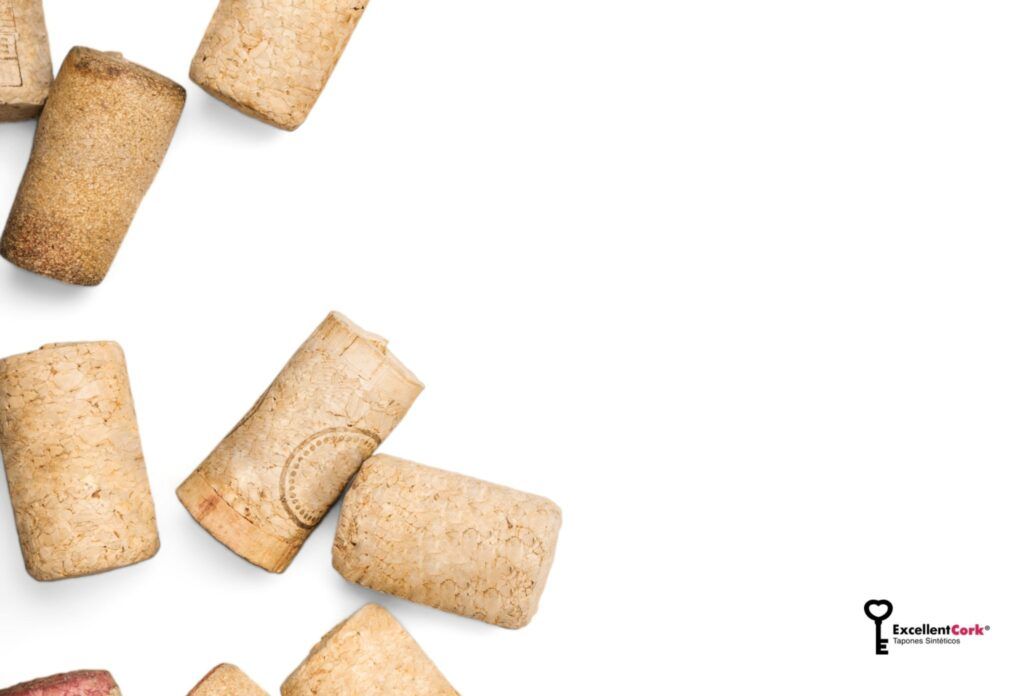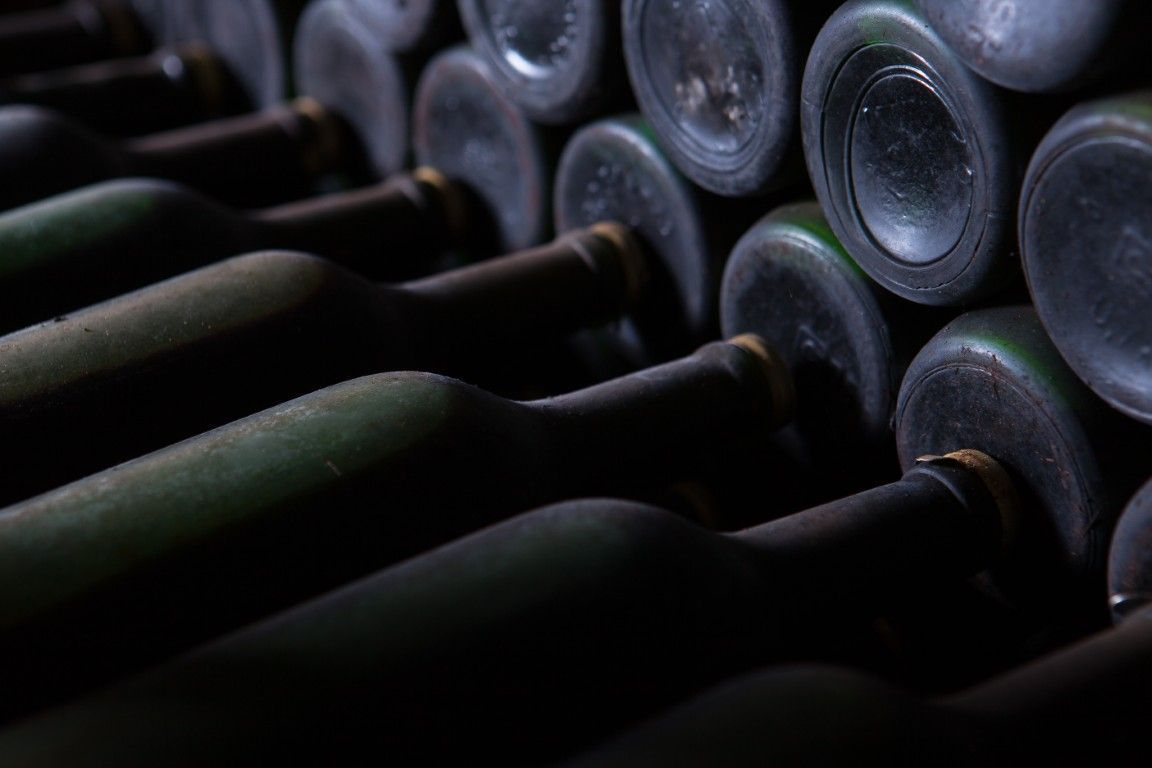A crucial element in preserving the qualities and freshness of essential beverages such as wine and oil is the cork stopper. This small but fundamental component plays a crucial role in the bottling process, hermetically sealing the bottle and protecting its contents from environmental factors that could compromise its quality. However, choosing the right diameter is a vital aspect often overlooked in the industry.
At Excellent Cork, as manufacturers of synthetic stoppers, we know that size does matter when it comes to sealing bottles. That’s why we have prepared this guide to explain the different diameters and when to use them.
Ready?
Types of cork stoppers and their ideal diameter
In the world of bottling, there are different cork stoppers designed to fit different types of bottles and preservation needs. Each type of stopper has an ideal diameter that ensures a hermetic seal and adequate protection of the contents.
Thus, we can find different standardized models:
- Natural stopper: made entirely of 100% natural cork.
- Synthetic stopper: made from thermoplastic elastomers.
- Twin or two-piece stopper: a combination of agglomerated stopper with a natural cork disc at each end.
- Crown stopper: known for being a metal cap with an inner cork lining up to 3 mm, mainly used in cava bottles and other carbonated beverages.
- Superior quality cork stopper (trefí): known for its high quality and especially used in sparkling wine bottles and other special wines. The term “trefí” comes from the French “très fin,” meaning “very fine.”
Standard cork stoppers and their recommended diameter
Standard cork stoppers are commonly used in the wine industry and are characterized by their cylindrical shape and a recommended diameter of 24 mm. These stoppers are pressure-fitted into 18 mm bottle necks, ensuring a safe and hermetic seal.
One of the benefits of using these standard models is their ability to allow the wine to breathe gradually once the bottle is opened. However, it is important to note that once the bottle is stored horizontally, the wine can moisten the stopper, which prevents oxygen entry and can affect the quality of the wine over time.
When opening a bottle, tasters usually smell the stopper as part of the evaluation process. If it smells of wine, it indicates that the liquid is in good condition. On the other hand, if it smells of cork, it may be a sign that the bottle has not been properly preserved or that the cork is contaminated with mold, which could affect the wine’s taste.
Standard models are not the only ones available in the market. Other models like the Bordeaux stopper, which has a length of 49.5 to 54 mm, and the Italian stopper, which can vary in length from 34 to 45 mm and has a larger diameter of 26 mm, also exist.
Each one is designed to fit different needs and preferences in this demanding industry.
Large cork stoppers: when to use them and what diameter they need?
Large cork stoppers are suitable for use in sparkling wines, such as cava, which require stoppers capable of withstanding higher pressure. These stoppers can have a diameter of up to 31 mm, allowing them to effectively seal bottles subjected to the pressure generated by the wine’s carbonation.
The design of these stoppers is very distinctive, characterized by a mushroom shape with a lower conical body and an upper ovoid body. This structure provides a hermetic seal that ensures the optimal preservation of the sparkling wine during storage and transportation.
Another distinctive feature of these corks is their stamping, usually placed on the top, and depending on the drawing, it means:
- Four-pointed star: placed on wine made traditionally.
- Circumference: used to indicate that the wine was made using the granvas method, which allows the second fermentation to occur in the bottle.
- Circle: this mark indicates that the wine has been made using the transfer method, which involves transferring the wine from one bottle to another after the second fermentation.
- Equilateral triangle: placed on carbonated wines.
These marks allow consumers and winemakers to easily identify the characteristics of each wine and its production method.
Cork stoppers for bottles: adapted to different sizes
In the packaging industry, the manufacture of cork stoppers encompasses different measurements to adapt to the various needs of producers.
For the wine sector, they are designed with diameters and lengths that ensure an adequate seal in standard bottles. Additionally, stoppers for olive oil require different dimensions due to the specific characteristics of this liquid.
Stoppers are also produced for other beverages and products such as liquors, vinegars, and cosmetics, each with their own size and design requirements. The diversity of measures reflects the versatility of this material in various packaging applications.
How to choose the right diameter of cork stopper
Making the right choice can be challenging if several important factors are not considered. This choice is vital to ensure an optimal seal and the preservation of the properties of the packaged liquid.
Here are some tips:
- Bottle neck size: ensure that the cork diameter is compatible with the bottle neck size. A too loose or tight fit can compromise the seal.
- Type of liquid: consider the type of liquid to be packaged. For example, sparkling wines may require larger diameter stoppers due to internal pressure.
- Cork length: important to ensure a safe and adequate seal, especially in wine bottles that will be stored for long periods.
- Testing and evaluations: conduct sealing tests and performance evaluations with different cork sizes to determine the most suitable one.
As you can see, bottle cork stoppers play an important role in preserving different liquids. Choosing them well can mean the difference between a perfect product and a spoiled one.
If you need a specific stopper to seal any of your products, remember that at Excellent Cork, we are prepared to manufacture the one that best suits your bottling needs.
Frequently asked questions about cork stoppers:
1. What types of cork stoppers are there?
There are different types of cork stoppers, each with its own characteristics and uses:
- Natural stopper: Made 100% from natural cork.
- Synthetic stopper: Made from thermoplastic elastomers.
- Twin or two-piece stopper: Combines natural and agglomerated cork.
- Crown stopper: Metal cap with cork lining, used in cava and carbonated drinks.
- Superior quality cork stopper (trefí): High quality, used in sparkling and special wines.
2. What diameter of cork stopper should I use?
The diameter of the cork stopper should be compatible with the bottle neck size. A diameter of 24 mm is recommended for standard wine bottles. For sparkling wines, larger diameters (up to 31 mm) are needed to withstand the pressure.
3. How to choose the right cork stopper?
To choose the right stopper, consider:
-
- Bottle neck size: Must be compatible with the stopper diameter.
- Type of liquid: Sparkling wines need larger diameter stoppers.
- Cork length: Ensures a safe seal, especially for long-term wine storage.
- Testing and evaluations: Perform tests to determine the ideal stopper.
</ ul>
4. What are the advantages of cork stoppers?
Cork stoppers offer several advantages:
-
-
- Hermetic seal: Protect the bottle contents from oxidation and contamination.
- Controlled permeability: Allow the wine to breathe, enhancing its flavor and aroma.
- Sustainability: Cork is a natural and biodegradable material.
- Versatility: They can be used for different types of bottles and liquids.
-
5. Where can I buy cork stoppers?
There are various cork stopper suppliers, such as Excellent Cork.
6. How to store cork stoppers?
Cork stoppers should be stored in a cool, dry, and dark place to maintain their properties.





